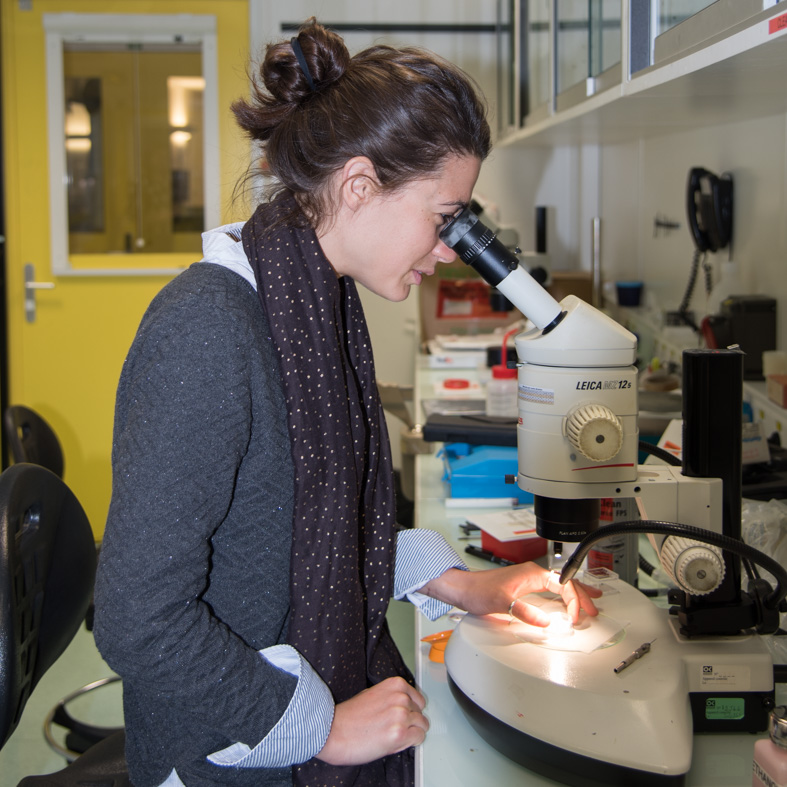- Home
- News
- General News
- #weekendusers Resolving...
#weekendusers Resolving the mystery of the Earth’s missing gas
04-11-2016
The atmospheres of the Earth and Mars are depleted of the noble gas Xenon, whilst meteorites similar to the rocky material that formed the Earth have it in abundance. All the other so-called noble gases appear in the Earth, Mars and meteorites. So what happened to Xenon and where has it gone? Researchers from the University Pierre et Marie Curie, in Paris, are spending the weekend at the ESRF in their quest for the vanished noble gas.
Sherlock Holmes would have a field day at the ESRF. A big synchrotron, a beamline where you can “transport” the samples to the centre of the Earth and a team of eager scientists who will work around the clock trying to find the missing Xenon. It is one of the great puzzles of science and, who knows, maybe they will find the clues that will solve it this time?
Like in a detective story, the researchers from the University Pierre et Marie Curie have already come up with some ideas of where the missing Xenon might be: “We think that Xenon might have been stored underground, based on previous experiments and on remains of primitive rocks found on Earth”, explains Chrystèle Sanloup, leader of the group, adding that maybe it sank there in the early days of the Earth.
 |
|
The team on BM23, in front of the set-up. From left to right: Jennifer Hudspeth, Angelika Rosa (from the ESRF) and Céline Crépisson. Crystèle Sanloup is missing in the photo. Credits: C. Argoud. |
The experiment they will carry out will submit the samples to the extreme pressure and temperature conditions of the crust and upper mantle of the Earth. The team will insert the gas onto quartz and feldspars, two minerals found in these layers. They will not only study Xenon but also Krypton, a noble gas more abundant in the Earth, Mars and meteorites. The aim is to compare the behaviour between the two noble gases.
A challenging experiment
The approach is unusual, as the team will use X-ray absorption spectroscopy on BM23, a technique not normally used for these experiments. “It is the first time that such a technique is used to probe the Xenon bonding in minerals”, says Céline Crépisson, who is studying this as the subject of her PhD. “Hopefully, it will provide us with answers about how Xenon differs from other gases”, she adds. As for the technical challenges of the experiment, Angelika Rosa, the ESRF local contact, explains that “the sample is very small under extreme conditions and we have very low concentrations of the gas, so it is very difficult to get a signal”.
 |
|
Céline Crépisson in the lab. Credits: Chantal Argoud. |
Another challenge of the experiment is the cell where the sample will be placed. In a little box, tiny pieces are separated into small compartments. Jessica Hudspeth, post-doctoral researcher in the group, is in charge of putting the sample in the cell, and explains that the “cell assembly has to be very stable and as transparent as possible so it lets the X-rays through. It was developed by Yoshio Kono, at the Carnegie Institution of Washington, and it is a crucial part for the success of the experiment. We also collaborate with Tetsuo Irifune in Ehime University (Japan), who synthesised the nanopolycristalline diamond needed for this kind of experiment”.
Crystèle Sanloup recalls the first time she attempted to do this experiment: “It was 15 years ago and I didn’t get any good data. The ESRF’s capabilities were not those of today, and I still had to learn a lot about the subject. And networking has proven essential in this field. Luckily things have improved and I am quite confident that we will get interesting data. Recently, since papers have started coming out, more motivated scientists have taken on this subject of research, namely chemists and high pressure physicists, and this is great as we are all contributing to it”.
Text by Montserrat Capellas Espuny
Top image: The sample under the microscope.



